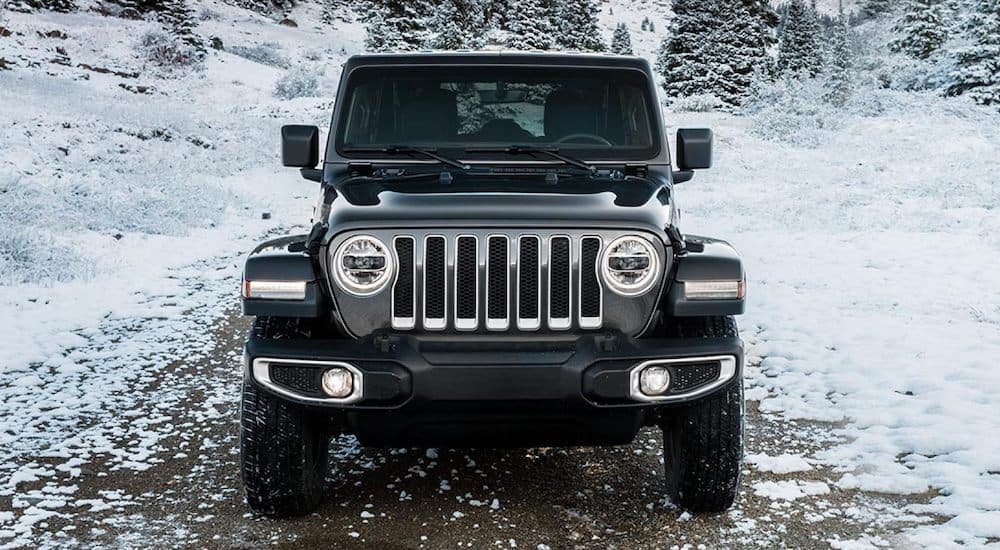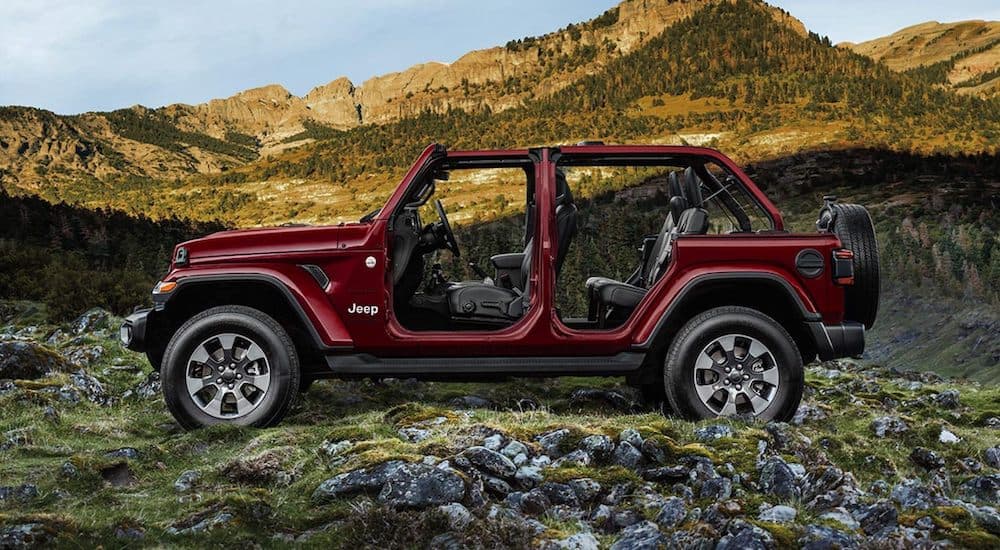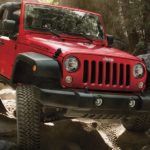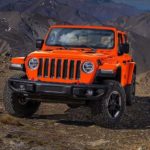Adventure is calling, but will you answer? America is a massive place, full of incredible off-the-grid possibilities. Lucky for us, we can drive just about anywhere. Long road trips, often across state lines, adorn the top of many peoples’ bucket lists. Whether it’s mountains, beaches, and deserts, we have it all within a reasonable driving distance! Ever since the dawn of the automobile, people have pushed their vehicles to the limits, expanding the corners of what we thought possible. In 1943, a company by the name of Jeep roared onto the automotive landscape. Manufacturing cars for the United States army and eventually civilians, Jeep has always been an innovator when it came to what a vehicle was capable of.
Throughout the company’s existence, Jeep has become synonymous with building rugged, versatile vehicles. They’ve perfected the craft of building a Sport Utility Vehicle (SUV) with bigger wheels, better suspension, a sturdier chassis, and an ever-expanding suite of helpful off-roading driver assistance technologies. One of the company’s leading off-roading models is the Jeep Wrangler. Originally released in 1987, the Wrangler has gone through many transformations, all for the betterment of taking it out where it belongs: off the pavement and into the wilderness. You don’t go to a Jeep Wrangler dealer asking for a polite, city car. The Wrangler was designed to push the limits. Exploring the great outdoors is easy, thanks to the Wrangler’s array of off-roading features. Stick around while we delve into those features and show you how to get ready for an off-roading excursion.
Preparation Is Key
It’s always a good idea to prepare before setting off on your big adventure. No one wants to head out into difficult terrain and find themselves stuck, lost, or worse, hurt. There are some common sense strategies to get yourself and your Wrangler off-road ready. Have a contingency plan in place for the various scenarios that could arise. You should know the whereabouts of your owner’s manual, have a way of contacting help if you need it, including roadside assistance and emergency services, and never go off-roading without letting someone else know your plan and location. The Wrangler’s off-roading prowess should be embraced and enjoyed. After all, that’s why Jeep works so tirelessly to design a vehicle for just that.
After you’ve phished out your owner’s manual and familiarize yourself with your Wrangler’s features, ground clearance, tire changing instructions, and driving modes, determine where you want to take your Jeep. If you’ve never off-roaded before, it’s wise to start on less challenging terrain. Find a nearby dirt or gravel path, nothing too extreme, and give it a try to see how those types of roads feel. Test your Wrangler on a variety of easier trails, inclines, and narrow roadways.
If you can test out driving over small, shallow waterways, you’ll get a good sense of how it feels to navigate those conditions. After you’re done with your test run, map out where you plan on going. It can be helpful to have a paper, offline map available as a backup should you land somewhere with no cell reception. There may be available anecdotes or blogs outlining the places you want to go off-road by people who have already been there. The internet is a great place to piece together what might be useful information for you later. Don’t forget to check the weather across the times you want to go.
Know the Conditions
Most Jeep Wranglers are outfitted with special driving modes specifically designed for a variety of terrain most commonly found on off-roading courses. If you’ve got a higher-trim Wrangler like a Sahara or a Rubicon, you’re bound to have some heavy-duty off-roading equipment. These Jeeps are designed to handle sand, rocks, snow, mud, and inclines. Each presents its own unique set of challenges. Here are some things to consider with each:
Sand
If you’re headed to the beach, desert, or dunes, your Wrangler is at risk of getting stuck. Make the most of sandy conditions by initiating high-range four-wheel drive. This will help with forward momentum. If possible, try releasing your tires’ air pressure by 10 to 12 lbs.
Rocks
Jeep Wranglers are notoriously good rock crawlers. Advances in electronic locking differentials, beefy tires, and heavy-duty steel skid plates create an ideal frame for your Jeep to crawl. You’ll want to be mindful of your speed at all times. The ideal speed for rock crawling is only one to three mph. This is where the low-range four-wheel drive comes in handy. Lower the tire pressure by three to five lbs, and be observant when it comes to your ground clearance. If a rock on your path is too large, try to drive around it safely.
Inclines
Moving up and down steep hills and inclines requires a delicate hand and tons of attention to do it safely. When moving up an incline, apply the gas at the base and adjust down as you get closer to the top. On the way down, use your lowest gear (if driving manual) or carefully reverse down in the original direction. Rely on your Jeep for deceleration, and never risk a hill that feels too steep.
Mud
Your Wrangler’s four-wheel drive truly shines in muddy conditions. Low gears are essential for deep mud, sludge, or snow. To avoid getting stuck, keep your Jeep moving at a steady momentum. If you feel the Jeep has lost grip, rotate your steering wheel back and forth until you regain control. You never want spinning wheels when you’re dealing with mud or snow.
Other Preparations
Preparation is key to a safe and fun off-roading experience for you and your fellow adventurers. Besides learning the ins and outs of your Jeep Wrangler’s capabilities, you should also come prepared with personal belongings that will be helpful in case things don’t go according to plan. Bring supplies such as water, food, blankets, batteries, and a first aid kit. If you plan on having your roof or doors off, have adequate straps available so your belongings don’t fly off the Jeep or onto other passengers.
It’s also worth scheduling an inspection to ensure your Wrangler is off-road ready. Have a trusted technician check your brakes, lights, tires, fluids, and battery. These small steps could help prevent catastrophe. Bring a tire gauge along for the ride so you can be sure about the tire pressure at all times.
Most Importantly: Have Fun!
When you’ve taken all the steps to be responsible about your off-roading, it’s finally time to enjoy the ride. Having a Jeep Wrangler and using all of its off-roading capabilities is an opportunity to connect to nature in a way many people cannot. You’ll see beautiful sites and connect to the spectacular parts of nature that we often miss out on in our day-to-day hustle.
Whether taking your Wrangler to a nearby campsite for a long weekend or road-tripping out to one of America’s stunning National Parks, the potential is endless. Your Jeep Wrangler can handle almost any terrain or weather condition. Enjoy the thrills of rock crawling in the summer or see the autumn leaves from within the forest. With the Wrangler’s ability to conquer many different conditions, any road can be paved with adventure. When you remember to be safe and follow simple precautions, you’ll be sure to enjoy your time exploring the wilderness.



